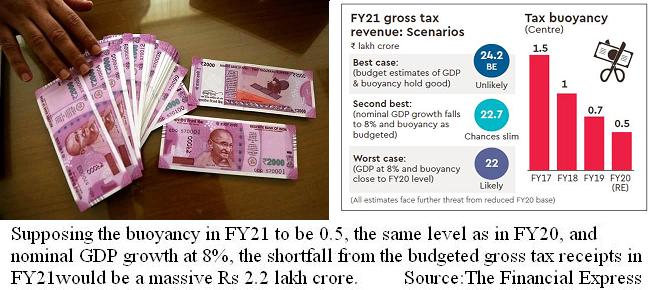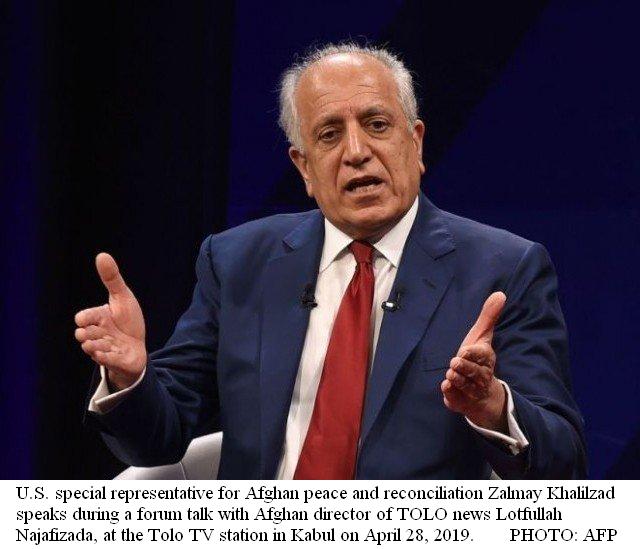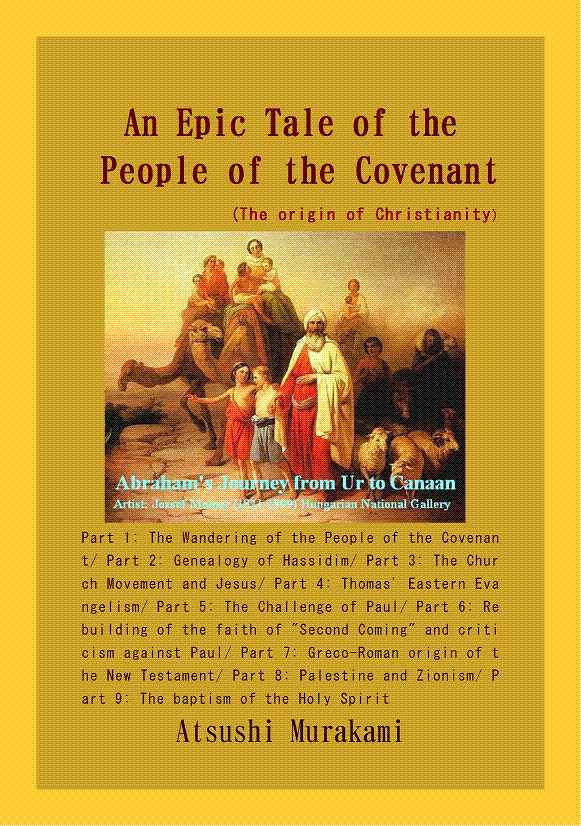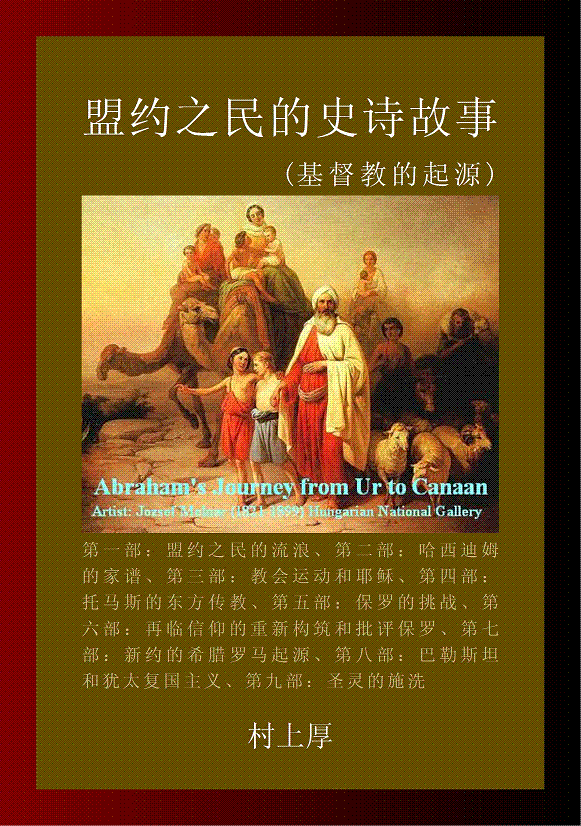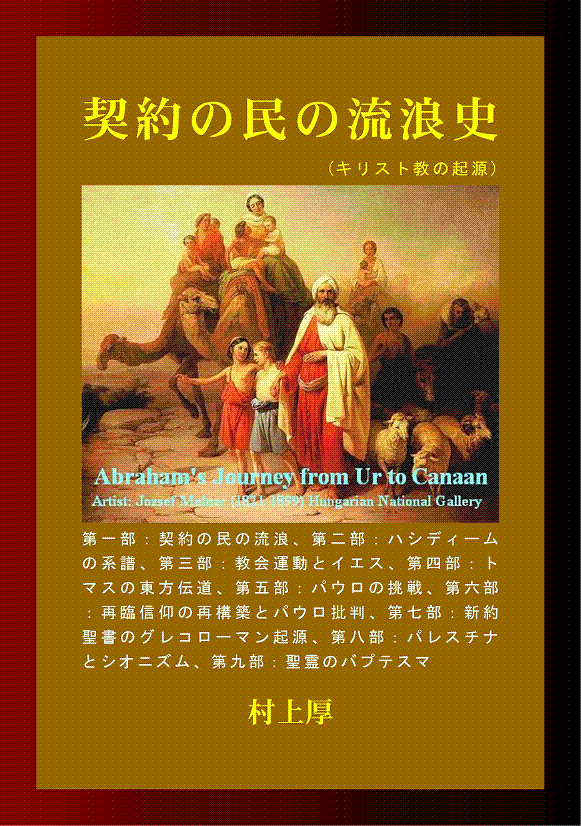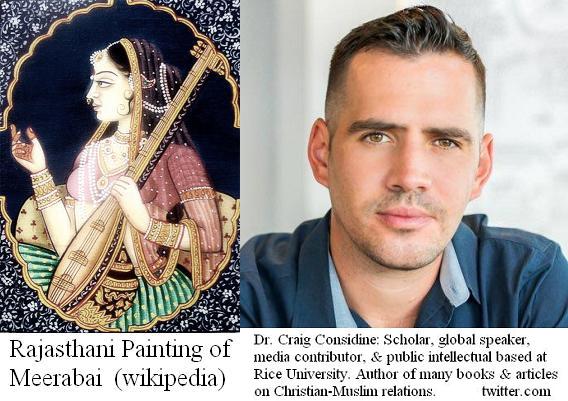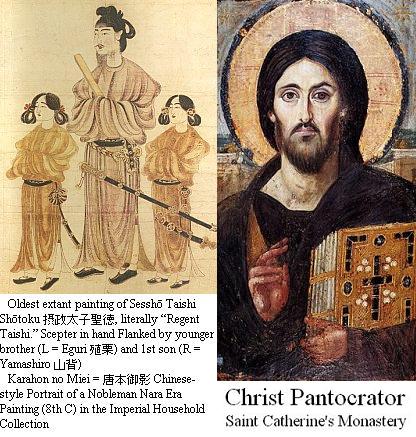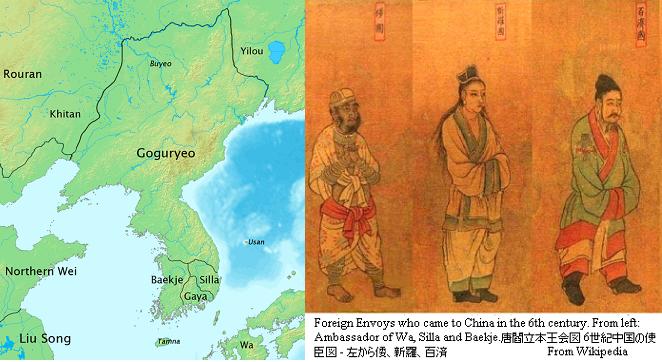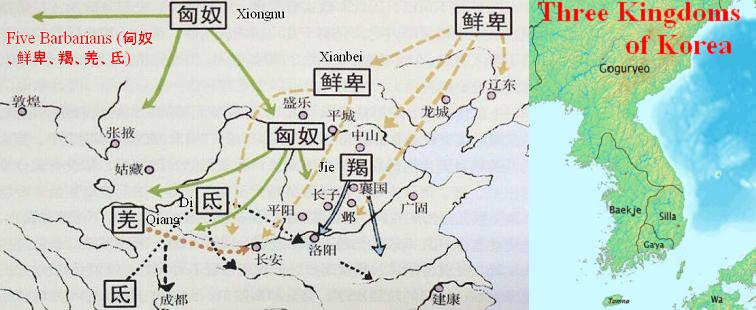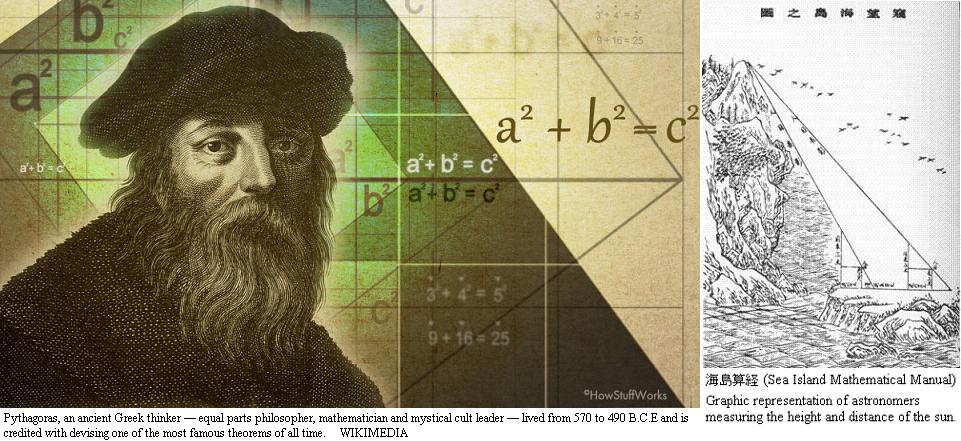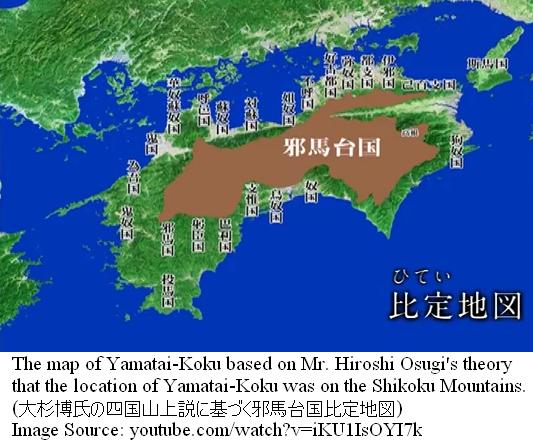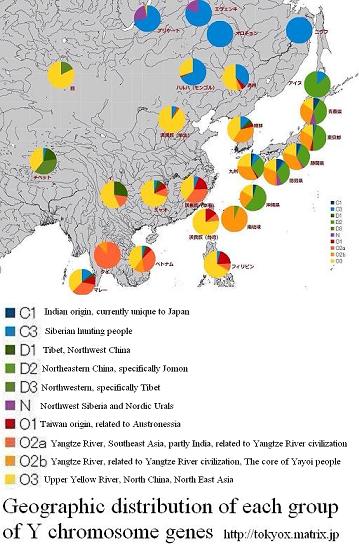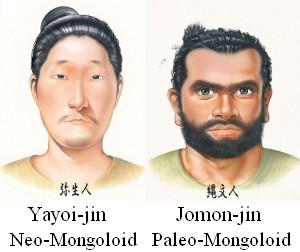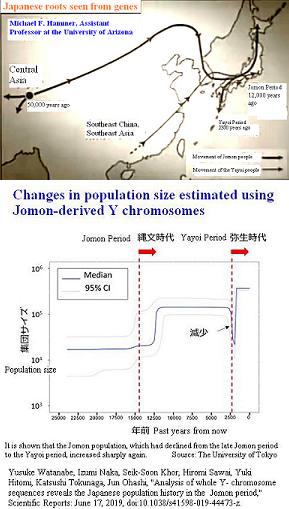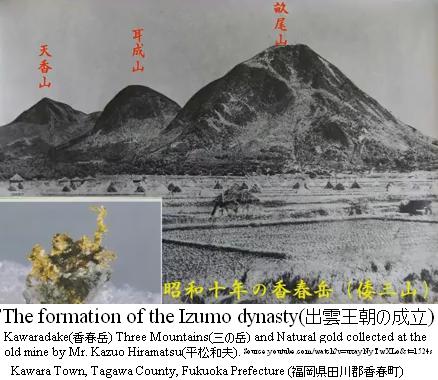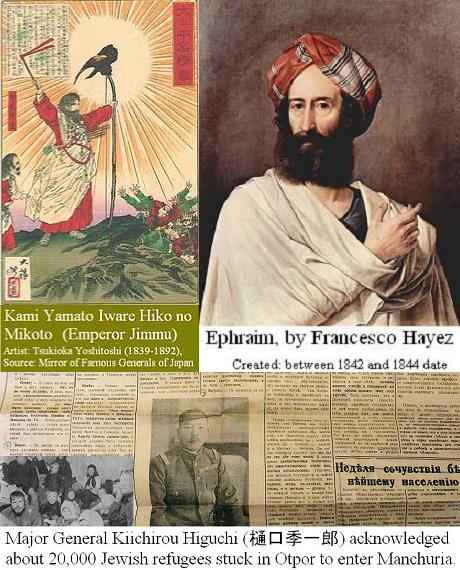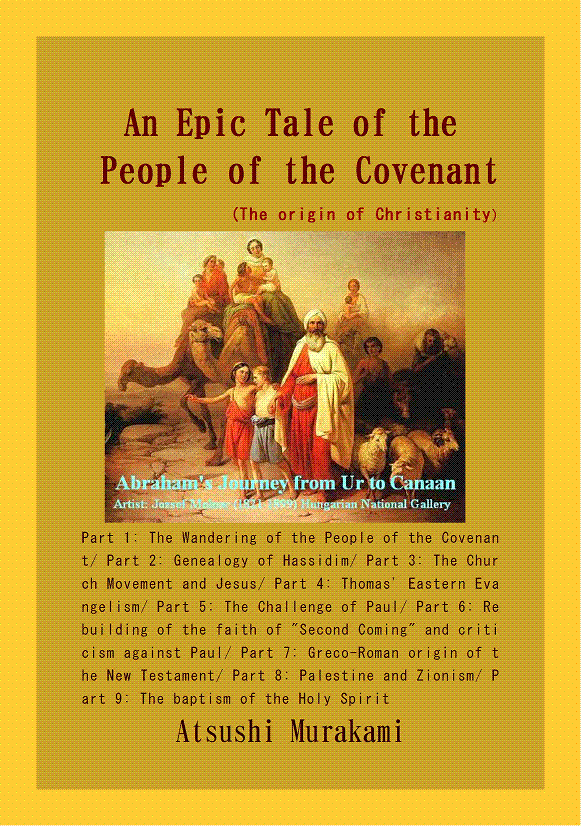| |||||||||||||||||||
|
पृष्ठ
एक सन्देश-
यह ब्लॉग समर्पित है साहित्य की अनुपम विधा "पद्य" को |
पद्य रस की रचनाओ का इस ब्लॉग में स्वागत है | साथ ही इस ब्लॉग में दुसरे रचनाकारों के ब्लॉग से भी रचनाएँ उनकी अनुमति से लेकर यहाँ प्रकाशित की जाएँगी |
सदस्यता को इच्छुक मित्र यहाँ संपर्क करें या फिर इस ब्लॉग में प्रकाशित करवाने हेतु मेल करें:-
kavyasansaar@gmail.com
pradip_kumar110@yahoo.com
pradip_kumar110@yahoo.com
इस ब्लॉग से जुड़े
मंगलवार, 31 मार्च 2020
【SEAnews:India Front Line Report】 March 30, 2020 (Mon) No. 3941
सोमवार, 30 मार्च 2020
वो इक्कीस दिन
एक दिन पत्नी बहुत खफा थी ,गुस्सा उनके सर पर था
बोली ,मेरे लिए ,तुम्हारे पास, वक़्त ना ,पल भर का
इतने बिज़ी हो गए हो तुम ,ख्याल न खुद का रख पाते
न तो ढंग से खाते पीते ,न ही प्यार ही दिखलाते
हमने भी महसूस किया ,सच बात कही है पत्नी ने
वादा किया कि दो हफ्ते हम लेंगे छुट्टी ,गर्मी में
जहाँ कहोगी तुम ,बस हम तुम ,अपना वक़्त गुजारेंगे
हनीमून को दोहराएंगे ,मिल कर मस्ती मारेंगे
प्लान कर रहे थे हम ये सब ,पर एलान हुआ एक दिन
कोरोना के कारण सब कुछ बंद रहेगा ,इक्कीस दिन
सारे दफ्तर बंद ,सिनेमा,मॉल ,दुकानों पर ताला
हम खुश थे ,मन चाहा अवसर ,मोदीजी ने दे डाला
काम धाम कुछ नहीं ,अकेले ,हम और पत्नी ,बैठे घर
लाभ उठाएंगे अवसर का ,मस्ती मारेंगे जी भर
हम दोनों खुश ,चहक रहे थे ,पहले दिन तो लगा मजा
काम वालियां जब ना आयी दूजे दिन ,तो लगी सजा
करो खुद ही सब झाड़ू पोंछा ,पका खाओ,मांजो बरतन
घर की डस्टिंग ,कपडे धोना ,काम करो सब नौकर बन
थोड़े काम किये पत्नी ने , थोड़े हमने ,बाँट लिए
आपस सहयोग किया कुछ दिन मुश्किल से काट लिए
हो जाते थे पस्त इस तरह ,सभी मस्तियाँ भूल गए
हनीमून दोहराने वाले ,सपने सभी फिजूल गए
ना कर सकते ,सैर सपाटा ,नहीं सिनेमा ,ना होटल
घर बैठे बस काम करो और टीवी तुम देखो दिन भर
फुर्र आशिक़ी हुई ,होगयी शुरू,रोज तू तू ,मै मै
कभी कल्पना ,ऐसे हॉलीडे की ,ना थी सपने में
चेन तोड़ने कोरोना की ,चैन हमारा टूट गया
प्यार मोहब्बत के वादों का ,सारा भांडा फूट गया
होता झगड़ा रोज मगर हम ,रह जाते मन में घुट कर
ना पत्नी मइके जा सकती ,ना हम जा सकते बाहर
इतने दिन ,पत्नी के संग रह यही समझ में आता है
रिश्तों में ज्यादा नजदीकी से खटास ,आ जाता है
दोष सभी था हालातों का ,अब हम किससे करे गिला
इक्कीस दिन के हनीमून में ,इक किस मुश्किल से न मिला
मदन मोहन बाहेती 'घोटू '
एक दिन पत्नी बहुत खफा थी ,गुस्सा उनके सर पर था
बोली ,मेरे लिए ,तुम्हारे पास, वक़्त ना ,पल भर का
इतने बिज़ी हो गए हो तुम ,ख्याल न खुद का रख पाते
न तो ढंग से खाते पीते ,न ही प्यार ही दिखलाते
हमने भी महसूस किया ,सच बात कही है पत्नी ने
वादा किया कि दो हफ्ते हम लेंगे छुट्टी ,गर्मी में
जहाँ कहोगी तुम ,बस हम तुम ,अपना वक़्त गुजारेंगे
हनीमून को दोहराएंगे ,मिल कर मस्ती मारेंगे
प्लान कर रहे थे हम ये सब ,पर एलान हुआ एक दिन
कोरोना के कारण सब कुछ बंद रहेगा ,इक्कीस दिन
सारे दफ्तर बंद ,सिनेमा,मॉल ,दुकानों पर ताला
हम खुश थे ,मन चाहा अवसर ,मोदीजी ने दे डाला
काम धाम कुछ नहीं ,अकेले ,हम और पत्नी ,बैठे घर
लाभ उठाएंगे अवसर का ,मस्ती मारेंगे जी भर
हम दोनों खुश ,चहक रहे थे ,पहले दिन तो लगा मजा
काम वालियां जब ना आयी दूजे दिन ,तो लगी सजा
करो खुद ही सब झाड़ू पोंछा ,पका खाओ,मांजो बरतन
घर की डस्टिंग ,कपडे धोना ,काम करो सब नौकर बन
थोड़े काम किये पत्नी ने , थोड़े हमने ,बाँट लिए
आपस सहयोग किया कुछ दिन मुश्किल से काट लिए
हो जाते थे पस्त इस तरह ,सभी मस्तियाँ भूल गए
हनीमून दोहराने वाले ,सपने सभी फिजूल गए
ना कर सकते ,सैर सपाटा ,नहीं सिनेमा ,ना होटल
घर बैठे बस काम करो और टीवी तुम देखो दिन भर
फुर्र आशिक़ी हुई ,होगयी शुरू,रोज तू तू ,मै मै
कभी कल्पना ,ऐसे हॉलीडे की ,ना थी सपने में
चेन तोड़ने कोरोना की ,चैन हमारा टूट गया
प्यार मोहब्बत के वादों का ,सारा भांडा फूट गया
होता झगड़ा रोज मगर हम ,रह जाते मन में घुट कर
ना पत्नी मइके जा सकती ,ना हम जा सकते बाहर
इतने दिन ,पत्नी के संग रह यही समझ में आता है
रिश्तों में ज्यादा नजदीकी से खटास ,आ जाता है
दोष सभी था हालातों का ,अब हम किससे करे गिला
इक्कीस दिन के हनीमून में ,इक किस मुश्किल से न मिला
मदन मोहन बाहेती 'घोटू '
शनिवार, 28 मार्च 2020
करोना का कहर - आठों प्रहर
कल कुर्सी का हथ्था बोला ,कब तक बांह दबाओगे ,
थोड़ी देर छोड़ दो मुझको ,खुला चैन से रहने दो
टी वी का रिमोट मिमियाया ,बार बार क्यों बटन दबा,
मेरी हालत पतली करदी ,मुझको टिक कर रहने दो
सिरहाने का तकिया भी गुस्सा हो मुझ पर गुर्राया ,
बोअर हो गया ,खर्राटे सुन ,हटो ,सांस लेनी मुझको
बीबी बोली बंद करो यह तरह तरह की फरमाइश ,
रोज पकाना ,झाड़ू ,बरतन ,सब करना पड़ता मुझको
हाथ जोड़ कर साबुन बोला ,बार बार घिसते मुझको ,
धोकर हाथ पड़े हो पीछे ,चैन न तुमको आये है
अरे करोना ,सत्यानाशी ,तूने ये हालत करदी ,
तुझ कारण ,एकांतवास ने ,क्या क्या दिन दिखलाये है
मदन मोहन बाहेती 'घोटू '
कल कुर्सी का हथ्था बोला ,कब तक बांह दबाओगे ,
थोड़ी देर छोड़ दो मुझको ,खुला चैन से रहने दो
टी वी का रिमोट मिमियाया ,बार बार क्यों बटन दबा,
मेरी हालत पतली करदी ,मुझको टिक कर रहने दो
सिरहाने का तकिया भी गुस्सा हो मुझ पर गुर्राया ,
बोअर हो गया ,खर्राटे सुन ,हटो ,सांस लेनी मुझको
बीबी बोली बंद करो यह तरह तरह की फरमाइश ,
रोज पकाना ,झाड़ू ,बरतन ,सब करना पड़ता मुझको
हाथ जोड़ कर साबुन बोला ,बार बार घिसते मुझको ,
धोकर हाथ पड़े हो पीछे ,चैन न तुमको आये है
अरे करोना ,सत्यानाशी ,तूने ये हालत करदी ,
तुझ कारण ,एकांतवास ने ,क्या क्या दिन दिखलाये है
मदन मोहन बाहेती 'घोटू '
शुक्रवार, 27 मार्च 2020
है उम्र हमारी साठ पार
तुम हमें बुजुर्ग बता कर के ,अहसास दिलाते बार बार
कर गयी जवानी बाय बाय ,है उम्र हमारी साठ पार
कहते हममें न बची फुर्ती ,गायब सब जोश ,गया जज्बा
हम दादागिरी दिखाते है ,लेकिन है अब्बा के अब्बा
कुछ कामधाम न बस दिन भर ,घर में हम बैठ निठल्ले से
बस वक़्त गुजारा करते है ,बंध कर बीबी के पल्ले से
या फिर गपियाते रहते है ,संग बिठा ,कभी उससे ,इससे
ना रहे काम के इसीलिये ,कर दिया रिटायर सर्विस से
तंग करते रहते बीबी को फरमाइश करते है दिन भर
ये ला वो ला ,चल चाय बना ,और गरम पकोड़े ही दे तल
रस्सी जल गयी ,ऐंठ अब भी ,लेकिन है हममें बकरार
कर गयी जवानी बाय बाय ,है उम्र हमारी साठ पार
हम नहीं काम के रहे जरा ,ये सोच तुम्हारी नहीं ठीक
है भरे हुए हम अनुभव से ,हमसे सकते तुम बहुत सीख
हम दुर्ग विरासत के,बुजुर्ग ,हमको नाकारा मत समझो
हम अब भी आग लगा सकते ,बुझता अंगारा मत समझो
यह सूरज भले ढल रहा है ,पर उसकी आभा स्वर्णिम है
बारिश हम ताबड़तोड़ नहीं ,लेकिन सावन की रिमझिम है
था जीवन सफर बड़ा मुश्किल ,हम तूफानों से खेले है
कितनी ही ठोकर खाई है ,कितने ही पापड़ बेले है
सब पका पकाया मिला तुम्हे ,फिर है काहे का अहंकार
कर गयी जवानी बाय बाय ,है उम्र हमारी साठ पार
तुम बूढा हमको जब कहते ,मन में मलाल छा जाता है
है कढ़ी भले ही बासी पर ,उसमे उबाल आ जाता है
हो कितना ही बूढा बंदर ,लेना न गुलाटी भूले पर
लिखता अच्छी ग़ज़लें,नगमे ,कितना ही बूढा हो शायर
घट गयी भले तन की सुषमा ,पर मन की ऊष्मा बाकी है
नज़रें चाहे कमजोर हुई ,कर सकते ताका झांकी है
उड़ता बूढा पंछी भी है ,माना कि उतना तेज नहीं
गुड़ मना ,गुलगुले से हमको ,लेकिन कोई परहेज नहीं
बस थोड़ा मौका मिल जाए ,हम कर सकते है चमत्कार
कर गयी जवानी बाय बाय ,है उम्र हमारी साठ पार
मदन मोहन बाहेती 'घोटू '
तुम हमें बुजुर्ग बता कर के ,अहसास दिलाते बार बार
कर गयी जवानी बाय बाय ,है उम्र हमारी साठ पार
कहते हममें न बची फुर्ती ,गायब सब जोश ,गया जज्बा
हम दादागिरी दिखाते है ,लेकिन है अब्बा के अब्बा
कुछ कामधाम न बस दिन भर ,घर में हम बैठ निठल्ले से
बस वक़्त गुजारा करते है ,बंध कर बीबी के पल्ले से
या फिर गपियाते रहते है ,संग बिठा ,कभी उससे ,इससे
ना रहे काम के इसीलिये ,कर दिया रिटायर सर्विस से
तंग करते रहते बीबी को फरमाइश करते है दिन भर
ये ला वो ला ,चल चाय बना ,और गरम पकोड़े ही दे तल
रस्सी जल गयी ,ऐंठ अब भी ,लेकिन है हममें बकरार
कर गयी जवानी बाय बाय ,है उम्र हमारी साठ पार
हम नहीं काम के रहे जरा ,ये सोच तुम्हारी नहीं ठीक
है भरे हुए हम अनुभव से ,हमसे सकते तुम बहुत सीख
हम दुर्ग विरासत के,बुजुर्ग ,हमको नाकारा मत समझो
हम अब भी आग लगा सकते ,बुझता अंगारा मत समझो
यह सूरज भले ढल रहा है ,पर उसकी आभा स्वर्णिम है
बारिश हम ताबड़तोड़ नहीं ,लेकिन सावन की रिमझिम है
था जीवन सफर बड़ा मुश्किल ,हम तूफानों से खेले है
कितनी ही ठोकर खाई है ,कितने ही पापड़ बेले है
सब पका पकाया मिला तुम्हे ,फिर है काहे का अहंकार
कर गयी जवानी बाय बाय ,है उम्र हमारी साठ पार
तुम बूढा हमको जब कहते ,मन में मलाल छा जाता है
है कढ़ी भले ही बासी पर ,उसमे उबाल आ जाता है
हो कितना ही बूढा बंदर ,लेना न गुलाटी भूले पर
लिखता अच्छी ग़ज़लें,नगमे ,कितना ही बूढा हो शायर
घट गयी भले तन की सुषमा ,पर मन की ऊष्मा बाकी है
नज़रें चाहे कमजोर हुई ,कर सकते ताका झांकी है
उड़ता बूढा पंछी भी है ,माना कि उतना तेज नहीं
गुड़ मना ,गुलगुले से हमको ,लेकिन कोई परहेज नहीं
बस थोड़ा मौका मिल जाए ,हम कर सकते है चमत्कार
कर गयी जवानी बाय बाय ,है उम्र हमारी साठ पार
मदन मोहन बाहेती 'घोटू '
बुधवार, 25 मार्च 2020
अनुशासन पर्व
एक सन्नाटा सा पसरा है ,एक ख़ामोशी सी छाई है
सब के मन में ,शंकाओं की बस होती आवाजाही है
द्वारों पर लटक रहे ताले ,सब दूकानें वीरान पड़ी
रहती थी चहलपहल जिन पर ,वो सड़कें सब सुनसान पड़ी
जहाँ रौनक हल्ला गुल्ला था ,वहां मौन ,शांति की आहट है
लोगों के मन में दबी दबी ,आशंका है ,घबराहट है
बस सूनापन ही सूनापन ,दिखता हर तरफ दिखाई है
एक सन्नाटा सा पसरा है एक ख़ामोशी सी छाई है
सब दुबके चारदीवारी में घर की ,मन में व्याकुलता है
जो थकते थे कर काम काम ,आराम उन्हें अब खलता है
घर में टी वी की ख़बरों पर सब रहते नज़र गढ़ाए है
क्या होगा ,कैसे ,कब होगा,सब के मन में शंकाएं है
ये कैसा कहर है कुदरत का ,ये बला कहाँ से आई है
एक सन्नाटा सा पसरा है ,एक ख़ामोशी सी छाई है
एक परमाणु सा लघु कीट,कर गया धमाका है बम का
दुनिया के कोने कोने में ,छाया है आलम ,मातम का
अब मेलजोल को छोड़छाड़ ,सब लोग दूरियां बना रहे
ना हो प्रकोप 'कोरोना 'का ,वो खैर खुदा से मना रहे
हम लड़े लड़ाई मिलजुल कर ,सबकी इसमें ही भलाई है
एक सन्नाटा सा पसरा है ,एक ख़ामोशी सी छाई है
अब मेहरी नहीं न कामवाली ,सब काम खुद ही को करना है
पति पत्नी मिलजुल साथ रहे ,अब लड़ना है न झगड़ना है
संकल्प हमें अब करना है ,रहना संयम ,अनुशासन में
हम स्वस्थ, रहेंगे सदा स्वस्थ ,ये भाव भरे अपने मन में
सामजिक दूरी बना रख्खो ,रुक सकती तभी ,तबाही है
एक सन्नाटा सा पसरा है ,एक ख़ामोशी सी छाई है
मदन मोहन बाहेती 'घोटू '
एक सन्नाटा सा पसरा है ,एक ख़ामोशी सी छाई है
सब के मन में ,शंकाओं की बस होती आवाजाही है
द्वारों पर लटक रहे ताले ,सब दूकानें वीरान पड़ी
रहती थी चहलपहल जिन पर ,वो सड़कें सब सुनसान पड़ी
जहाँ रौनक हल्ला गुल्ला था ,वहां मौन ,शांति की आहट है
लोगों के मन में दबी दबी ,आशंका है ,घबराहट है
बस सूनापन ही सूनापन ,दिखता हर तरफ दिखाई है
एक सन्नाटा सा पसरा है एक ख़ामोशी सी छाई है
सब दुबके चारदीवारी में घर की ,मन में व्याकुलता है
जो थकते थे कर काम काम ,आराम उन्हें अब खलता है
घर में टी वी की ख़बरों पर सब रहते नज़र गढ़ाए है
क्या होगा ,कैसे ,कब होगा,सब के मन में शंकाएं है
ये कैसा कहर है कुदरत का ,ये बला कहाँ से आई है
एक सन्नाटा सा पसरा है ,एक ख़ामोशी सी छाई है
एक परमाणु सा लघु कीट,कर गया धमाका है बम का
दुनिया के कोने कोने में ,छाया है आलम ,मातम का
अब मेलजोल को छोड़छाड़ ,सब लोग दूरियां बना रहे
ना हो प्रकोप 'कोरोना 'का ,वो खैर खुदा से मना रहे
हम लड़े लड़ाई मिलजुल कर ,सबकी इसमें ही भलाई है
एक सन्नाटा सा पसरा है ,एक ख़ामोशी सी छाई है
अब मेहरी नहीं न कामवाली ,सब काम खुद ही को करना है
पति पत्नी मिलजुल साथ रहे ,अब लड़ना है न झगड़ना है
संकल्प हमें अब करना है ,रहना संयम ,अनुशासन में
हम स्वस्थ, रहेंगे सदा स्वस्थ ,ये भाव भरे अपने मन में
सामजिक दूरी बना रख्खो ,रुक सकती तभी ,तबाही है
एक सन्नाटा सा पसरा है ,एक ख़ामोशी सी छाई है
मदन मोहन बाहेती 'घोटू '
मंगलवार, 24 मार्च 2020
【SEAnews】Review:The baptism of the Holy Spirit (Aramaic roots IV)-E
| ||||||||||||||||||||
|
बुधवार, 18 मार्च 2020
बूढा बुढ़िया और तन्हाई
एक बूढा और उसकी बुढ़िया ,दोनों हाथों में हाथ धरे
बस बैठ यूं ही तन्हाई में ,बीती बातों को याद करे
क्या दीप्त चमकता यौवन था ,फुर्ती से भरा हुआ तन था
थी भरी भरी सी कसी देह,और चंदा जैसा आनन था
हम दोनों पागल प्रेमी इक ,दूजे को निहारा करते थे
बंध कर बाहों के बंधन में ,हम वक़्त गुजारा करते थे
पर समय संग वो रंगरलियां और गया जमाना मस्ती का
जब जिम्मेदारी सर आई और लादा बोझ गृहस्थी का
हो गयी गुटर गू बंद और हम लुल्लु चप्पू सब बिसरे
बस बैठ यूं ही तन्हाई में ,बीती बातों को याद करे
याद आते है वो प्रेमपत्र ,जो मुझको बहुत सुहाते थे
पढता था इतनी बार उन्हें कि मन को रट रट जाते थे
अपने मन का सब प्रेमभाव ,तुम प्रकट किया करती लिखके
मोती से अक्षर बीच बीच ,वो चुंबन चिन्ह लिपस्टिक के
वो पोस्टमेन का इन्तजार ,आता है अब भी याद हमें
जिस दिन तेरी चिट्ठी मिलती ,छा जाता था उन्माद हमें
अब प्रेमपत्र का थ्रिल न बचा ,सब मोबाइल पर बात करे
बस बैठ यूं ही तन्हाई में ,बीती बातों को याद करे
फिर एक दिवस वो भी आया जब मैं दूल्हा तुम दुल्हन बन
अग्नि के फेरे सात लिए ,बंध गया जनम भर का बंधन
है प्रथम मिलन की याद तुम्हे ,तुम बैठी थी सकुचाई सी
मैंने जब घूंघट पट खोले ,तुम लिपट गयी शरमाई सी
मैं मधुर प्रेम रस में डूबा ,बाँहों में तुझको घेरा था
कोरे कागज पर प्रथम प्रेम का पहला शब्द उकेरा था
संग जीने मरने की कसमें ,खाई थी मन विश्वास भरे
बस बैठ यूं ही तन्हाई में ,बीती बातों को याद करे
कुछ दिन फिर ऊंचे गगन उड़े ,थोड़े चहके ,महके बहके
वो मस्ती करना ,वो उड़ान ,याद आते वो दिन रह रह के
फिर फंसे गृहस्थी चक्कर में ,बच्चे आये ,पाले पोसे
उड़ना सीखा,सब छोड़ गये ,निज नीड बसा ,किसको कोसे
अब तो बस मैं हूँ और तुम हो ,आपस में हम ही सहारा है
ना चिंता ना जिम्मेदारी ,ये वक़्त बड़ा ही प्यारा है
लेना न किसी से ना देना ,कोई से हम क्यों भला डरें
बस बैठ यूं ही तन्हाई में ,बीती बातों को याद करे
ना रही बसंती ऋतू है अब ,ना है उमंग ना है तरंग
तन क्षीण ,बिमारी ने घेरा ,अब रूठ गया हमसे अनंग
फिर भी हम तुम दोनों संग है ,ये साथ हमारा क्या कम है
है अक्षुण ,अमर प्यार अपना ,जीवित जब तक दम में दम है
मैं ख्याल तुम्हारा रखता हूँ ,तुम रखती मेरा ख्याल सदा
कल भी था आज और कल भी ,जिन्दा है अपना प्यार सदा
बस वक़्त गुजारा करते है ,सह एक दूसरे के नखरे
बस बैठ यूं ही तन्हाई में ,बीती बातों को याद करे
मदन मोहन बाहेती 'घोटू '
एक बूढा और उसकी बुढ़िया ,दोनों हाथों में हाथ धरे
बस बैठ यूं ही तन्हाई में ,बीती बातों को याद करे
क्या दीप्त चमकता यौवन था ,फुर्ती से भरा हुआ तन था
थी भरी भरी सी कसी देह,और चंदा जैसा आनन था
हम दोनों पागल प्रेमी इक ,दूजे को निहारा करते थे
बंध कर बाहों के बंधन में ,हम वक़्त गुजारा करते थे
पर समय संग वो रंगरलियां और गया जमाना मस्ती का
जब जिम्मेदारी सर आई और लादा बोझ गृहस्थी का
हो गयी गुटर गू बंद और हम लुल्लु चप्पू सब बिसरे
बस बैठ यूं ही तन्हाई में ,बीती बातों को याद करे
याद आते है वो प्रेमपत्र ,जो मुझको बहुत सुहाते थे
पढता था इतनी बार उन्हें कि मन को रट रट जाते थे
अपने मन का सब प्रेमभाव ,तुम प्रकट किया करती लिखके
मोती से अक्षर बीच बीच ,वो चुंबन चिन्ह लिपस्टिक के
वो पोस्टमेन का इन्तजार ,आता है अब भी याद हमें
जिस दिन तेरी चिट्ठी मिलती ,छा जाता था उन्माद हमें
अब प्रेमपत्र का थ्रिल न बचा ,सब मोबाइल पर बात करे
बस बैठ यूं ही तन्हाई में ,बीती बातों को याद करे
फिर एक दिवस वो भी आया जब मैं दूल्हा तुम दुल्हन बन
अग्नि के फेरे सात लिए ,बंध गया जनम भर का बंधन
है प्रथम मिलन की याद तुम्हे ,तुम बैठी थी सकुचाई सी
मैंने जब घूंघट पट खोले ,तुम लिपट गयी शरमाई सी
मैं मधुर प्रेम रस में डूबा ,बाँहों में तुझको घेरा था
कोरे कागज पर प्रथम प्रेम का पहला शब्द उकेरा था
संग जीने मरने की कसमें ,खाई थी मन विश्वास भरे
बस बैठ यूं ही तन्हाई में ,बीती बातों को याद करे
कुछ दिन फिर ऊंचे गगन उड़े ,थोड़े चहके ,महके बहके
वो मस्ती करना ,वो उड़ान ,याद आते वो दिन रह रह के
फिर फंसे गृहस्थी चक्कर में ,बच्चे आये ,पाले पोसे
उड़ना सीखा,सब छोड़ गये ,निज नीड बसा ,किसको कोसे
अब तो बस मैं हूँ और तुम हो ,आपस में हम ही सहारा है
ना चिंता ना जिम्मेदारी ,ये वक़्त बड़ा ही प्यारा है
लेना न किसी से ना देना ,कोई से हम क्यों भला डरें
बस बैठ यूं ही तन्हाई में ,बीती बातों को याद करे
ना रही बसंती ऋतू है अब ,ना है उमंग ना है तरंग
तन क्षीण ,बिमारी ने घेरा ,अब रूठ गया हमसे अनंग
फिर भी हम तुम दोनों संग है ,ये साथ हमारा क्या कम है
है अक्षुण ,अमर प्यार अपना ,जीवित जब तक दम में दम है
मैं ख्याल तुम्हारा रखता हूँ ,तुम रखती मेरा ख्याल सदा
कल भी था आज और कल भी ,जिन्दा है अपना प्यार सदा
बस वक़्त गुजारा करते है ,सह एक दूसरे के नखरे
बस बैठ यूं ही तन्हाई में ,बीती बातों को याद करे
मदन मोहन बाहेती 'घोटू '
करोना का शुक्रिया
ऐ करोना,शुक्रिया ,तूने भला ऐसा किया ,
उनकी बक बक बंद ,मुंह पर ,उनने पट्टी बांधली
मास्क ने बंध टास्क पूरा किया ,बिमारी बची ,
हो गयी है बंद नित फरमाइशों की धांधली
रेस्ट थोड़ा मिल गया उनकी चटोरी जीभ को ,
चटकारे भी लेती है कम,कुलबुलाना कम हुआ
बंद होटल ,रेस्टरां सब और ठेले चाट के ,
सन्नाटे बाज़ार में ,दहशत भरा मौसम हुआ
घोटू
ऐ करोना,शुक्रिया ,तूने भला ऐसा किया ,
उनकी बक बक बंद ,मुंह पर ,उनने पट्टी बांधली
मास्क ने बंध टास्क पूरा किया ,बिमारी बची ,
हो गयी है बंद नित फरमाइशों की धांधली
रेस्ट थोड़ा मिल गया उनकी चटोरी जीभ को ,
चटकारे भी लेती है कम,कुलबुलाना कम हुआ
बंद होटल ,रेस्टरां सब और ठेले चाट के ,
सन्नाटे बाज़ार में ,दहशत भरा मौसम हुआ
घोटू
सदस्यता लें
संदेश (Atom)
हलचल अन्य ब्लोगों से 1-
-
फूलों से नहीं दुआ-सलाम - फूलों से नहीं दुआ-सलामदुनिया दुख का दूसरा नाम कहते आये सुबह औ'शाम, देख न पाये उड़ते पंछी फूलों से नहीं दुआ-सलाम !जान-जान कर कुछ कब आयाप्रेम लहर इक भिगो गयी...5 घंटे पहले
-
भारतीय दर्शन के त्रिरत्न - भारतीय दर्शन और त्रितत्व रहस्य 01 - त्रिगुण 01.1 श्रीमद्भगवद्गीता आधारित त्रिगुण संबंधित 27 श्लोक + भागवत पुराण का 01 श्लोक⤵️ 3.5,3.27,3.28,3.33,+ 5.2...2 दिन पहले
-
किताब मिली -शुक्रिया - 19 - ऐ हमसफ़र ये याद रख, तेरे बिना यह ज़िंदगी कि सिर्फ़ धड़कनों की खींच-तान है, थकान है रहे जब उसके दिल में हम, तो हम को ये पता चला वो बंद खिड़कियों का इक मक...4 दिन पहले
-
दीप जलता रहे - हमारे चारों ओर केइस घने अंधेरे में समय थोड़ा ही हो भले उजेला होने में विश्वास आत्म का आत्म पर यूं ही बना रहेसाकार हर स्वप्न सदा होता रहेअपने हर सरल - कठिन र...1 हफ़्ते पहले
-
"क्या शिक्षक भी इंसान नहीं? क्या उनकी रुचियों और अधिकारों की न हो पहचान?" - *"क्या शिक्षक भी इंसान नहीं? क्या उनकी रुचियों और अधिकारों की न हो पहचान?"* *समाज कहता आदर्श बने रहें, ये कैसा दस्तूर है,* *पर शिक्षक के दिल में भी कुछ सपन...1 हफ़्ते पहले
-
अवनीश चौहान को मिलेगा कादम्बरी सम्मान - ------------------------------ *पुरस्कृत कृति : *'एक अकेला पहिया' (नवगीत-संग्रह), कवि : अवनीश सिंह चौहान, प्रकाशक: प्रकाश बुक डिपो, बरेली, उ.प्र. (फोन: 0...2 हफ़्ते पहले
-
1437-रतन टाटा : संस्कृति से साक्षात्कार - *विजय जोशी**, **पूर्व ग्रुप महाप्रबंधक**, **भेल* जीवन में आगमन से पूर्व एवं पश्चात् दो आयाम ऐसे हैं, जो आदमी के जीवन की दशा और दिशा दोनों निर्धारित ...3 हफ़्ते पहले
-
780. कुछ ताँका (28 ताँका) - *बच्चे* 1. बच्चों के बिना फीका है पकवान सूना घर-संसार, लौटते ही बच्चों के होता पर्व-त्योहार। 2. तोतली बोली माँ-बाबा को पुकारे वो नौनिहाल, बोली सुन-सु...3 हफ़्ते पहले
-
प्लैजर मैरिज- मुस्लिम समुदाय - विश्व में सबसे ज्यादा मुस्लिम जनसंख्या वाले देश इंडोनेशिया में वर्तमान में निकाह का एक ढंग ट्रेडिंग हो रहा है , जिसमें गरीबी का जीवन गुजार रही म...3 हफ़्ते पहले
-
लीज एंड लाइसेंस से सुरक्षित रहेगा घर - आज तक मकान मालिक घर किराये पर देने से पहले रेंट एग्रीमेंट बनवाते आ रहे हैं जिसमें घर को किराएदारी पर देने का 11 महीने का अनुबन्ध रहता है. घर के कब्ज...3 हफ़्ते पहले
-
-
शब्द से ख़ामोशी तक – अनकहा मन का (२६) - * बेशक कोई रिश्ता हमें जन्म से मिलता है परंतु उस रिश्ते से जुड़ाव हमारे मनोभाव पर निर्भर करता है । जन्म मर...4 हफ़्ते पहले
-
A visit to Frankfurt - *अभी मैं तुम्हारे शहर से गई नहीं हूँ * *अभी तो मैं बाक़ी हूँ उन अहसासों में * *अभी तो सुनाई देती है मुझे गोयथे यूनिवर्सिटेट और तुम्हारे घर के बीच की सड़क ...5 हफ़्ते पहले
-
अनजान हमसफर - इंदौर से खरगोन अब तो आदत सी हो गई है आने जाने की। बस जो अच्छा नहीं लगता वह है जाने की तैयारी करना। सब्जी फल दूध खत्म करो या साथ लेकर जाओ। गैस खिड़कियाँ ...1 माह पहले
-
डमरू घनाक्षरी - डमरू घनाक्षरी - शृंगार रस वर्णिक छंद- 8, 8, 8, 8 की एक पंक्ति हर अठकल अमात्रिक - त्रिकल त्रिकल द्विकल से चार समतुकांत पंक्तियाँ अनत जगत यह, सरल सहज व...1 माह पहले
-
अब चक्र सुदर्शन उठाओ ना। - बहुत सुना दी मुरली धुन मीठी , अब चक्र सुदर्शन उठाओ ना। मोहित-मोहक रूप दिखा कर, मोह चुके मनमोहन मन को, अधर्म मिटाने इस धरती से , धर्म सनातन की रक्षा हित, ...1 माह पहले
-
पुरानी तस्वीर... - कल से लगातार बारिश की झड़ी लगी है। कभी सावन के गाने याद आ रहे तो कभी बचपन की बरसात का एहसास हो रहा है। तब सावन - भादो ऐसे ही भीगा और मन खिला रहता था। ...1 माह पहले
-
संवाद - एकांत में संवाद ************* उदास काले फूलों वाली रात उतरी पहाड़ो की देह पर जैसी सरकती हैं जमी पर असंख्य लाल चीटियां झूठी हँसी लिए स्नोड्राप बह रहे हैं एक ब...1 माह पहले
-
बीज - मंत्र . - * शब्द बीज हैं! बिखर जाते हैं, जिस माटी में , उगा देते हैं कुछ न कुछ. संवेदित, ऊष्मोर्जित रस पगा बीज कुलबुलाता फूट पड़ता , रचता नई सृष्टि के अं...2 माह पहले
-
बीत गई श्रीकृष्ण जन्माष्टमी - - * बीत गई श्रीकृष्ण जन्माष्टमी .पूरा हो गया व्रत!- भक्तों ने खाते-पीते नाचते-गाते,आधी रात तक जागरण कर लिया जन्म करा दिया, प्रसाद चढ़ा दिया खा-खिला दिया,...2 माह पहले
-
-
द्वार पर एक बोर्ड लगा था, जिस पर लिखा था: मुझे बड़ा आश्चर्य हुआ। "अंधेरे में संवाद" ! - *"अंधेरे में संवाद"* जन्मदिन का उपहार सुभाष (मेरे पति) ने सुबह ही कहा - "आज कुछ बनाना नहीं। लंच के लिए हम बाहर चलेंगे। तुम्हारे जन्मदिन पर आज तुम्...2 माह पहले
-
अज़रबैजान यात्रा (भाग 11) - *अज़रबैजान यात्रा (भाग 11) - **निजामी स्ट्रीट और हैदर अलिएव सेंटर और भारत वापसी* *अज़रबैजानी चाय के कप प्लेट * दोपहर के भोजन के उपरांत हम लोग दो जगह ज...3 माह पहले
-
हरियाली खुशहाली है... संध्या शर्मा - बच्चों आओ मैं हूँ पेड़ मुझे लगाओ करो ना देर जब तुम मुझे उगाओगे धरती सुखी बनाओगे दुनिया मेरी निराली है हरियाली खुशहाली है रोको मुझपर होते प्रहार मै...5 माह पहले
-
मैं जीवन हूँ - न मैं सुख हूँ न दुख न राग न द्वेष मैं जीवन हूँ बहता पानी तुम मिलाते हो इसमें जाने कितने केमिकल्स अपने स्वार्थों के भरते हो इसमें कभी धूसर रंग कभी लाल तो ...5 माह पहले
-
गुमशुदा ज़िन्दगी - ज़िन्दगी कुछ तो बता अपना पता ..... एक ही तो मंज़िल है सारे जीवों की और वो हो जाती है प्राप्त जब वरण कर लेते हैं मृत्यु को , क्यों कि असल मंज़िल म...5 माह पहले
-
एक अनूठी फ़िल्म- 'नज़र अंदाज़'. - 37° C, तापमान से बचने के लिये,, कमरे के परदे खींचे, A.C. चलाया और ओटीटी प्लेटफार्म पर कोई फ़िल्म खोजने लगे. इत्तेफ़ाक़ से एक फ़िल्म का ट्रेलर चलने लगा, और...7 माह पहले
-
-
हाथी तो हाथी होता है - हाथी तो हाथी होता है । जंगल का साथी होता है । हरदम उसकी मटरगशतियां, कभी खेत में, कभी बस्तियां; कभी नदी के बैठ किनारे, देखा करता है वो कश्तियां । कभी हि...8 माह पहले
-
'साहित्य' अलग है, 'भाषा' अलग है - भाषा में होता है ज्ञानऔर...अपना ज्ञान भी होता है भाषा काछोटे शब्दों में कहिए तोभाषा यानिज्ञान भीन मौन हैभाषाऔर न हीज्ञान मौन हैएक पहचान हैभाषा...जो अपने आ...8 माह पहले
-
-
जो मेरे अन्दर से गुजरता है - जाने कौन है वो जो मेरे अन्दर से गुजरता है थरथरायी नब्ज़ सा खामोश रहता है मैं उसे पकड़ नहीं सकती छू नहीं सकती एक आखेटक सा शिकार मेरा करता है जाने क...9 माह पहले
-
ओ साथी मेरे - मुझसे रुकने को कह चल पड़ा अकेले सितारों की दुनिया में जा छिपा कहीं ... वादा किया था उससे -कहा मानूंगी राह तक रही हूँ ,अब तक खड़ी वहीं... वो अब हमेशा के लिए म...9 माह पहले
-
रामलला का करते वंदन - कौशल्या दशरथ के नंदन आये अपने घर आँगन, हर्षित है मन पुलकित है तन रामलला का करते वंदन. सौगंध राम की खाई थी उसको पूरा होना था, बच्चा बच्चा थ...9 माह पहले
-
कल्पना - आज मैं जो कुछ भी लिखने जा रही हूँ वह एक ऐसी घटना है जिसे यदि आप जीना चाहते हैं तो अपनी कल्पना शक्ति को बढ़ाईये. जितना ज्यादा आप अपनी कल्पना के घोड़े दौड़ाए...9 माह पहले
-
वर्तमान की वह पगडंडी जो इस देहरी तक आती थी..... - *युद्ध : बच्चे और माँ (कविता)* साहित्य अकादमी के वार्षिक राष्ट्रीय बहुभाषीकवि सम्मेलन की चर्चा मैंने अभी पिछली बार की थी। वहाँ काव्यपाठ में प्रस्तुत अपनी र...1 वर्ष पहले
-
इस सप्ताह में ही भूकम्प के कई झटकों के साथ साथ एक बड़े भूकम्प के आने की आशंका है !! - Bhukamp kab aayega इस सप्ताह में ही भूकम्प के कई झटकों के साथ साथ एक बड़े भूकम्प के आने की आशंका है !! 21वीं सदी के शुरू होते ही इंटरनेट पर हिंदी ...1 वर्ष पहले
-
डॉल्बी विजन देखा क्या? - इससे पहले, अपने पिछले आलेख में मैंने आपसे पूछा था – डॉल्बी एटमॉस सुना क्या? यदि आपने नहीं सुना, तो जरूर सुनें. अब इससे आगे की बात – डॉल्बी विजन देखा क...1 वर्ष पहले
-
चन्द्रशेखर आज़ाद - चंद्रशेखर "आज़ाद" ************** उदयाचल से अस्तातल तक इसकी जय जयकार रही, शिक्षा और ज्ञान की इस पर बहती सतत बयार रही, वैभव में दुनियाँ का कोई देश न इसका सानी...1 वर्ष पहले
-
-
क्यों बदलूं मैं तेवर अपने मौसम या दस्तूर नहीं हूँ - ग़ज़ल मंज़िल से अब दूर नहीं हूँ थोड़ा भी मग़रूर नहीं हूँ गिर जाऊँ समझौते कर लूँ इतना भी मजबूर नहीं हूँ दूर हुआ तू मुझसे फिर भी तेरे ग़म से चू...1 वर्ष पहले
-
Measuring Astronomical distances in Space - क्या आप जानते हैं कि दूरी कैसे मापी जाती है? बिल्कुल!!! हम सब जानते हैं, है ना?मान लीजिए कि मैं एक नोटबुक को मापना चाहती हूं, मैं एक पैमाना/रूलर लूंगी, एक ...1 वर्ष पहले
-
भकूट - कूट-कूट कर भरा हुआ प्रेम.. - सबको भकूट दिवस की हार्दिक शुभकामनाएं। आप सब भी हैरान हो रहे होंगे कि आज तो वैलेंटाइन डे है, हैप्पी वैलेंटाइन डे बोलना होता है, यह भकूट दिवस क्या और कैसा। त...1 वर्ष पहले
-
ज़िन्दगी पुरशबाब होती है - क्या कहूँ क्या जनाब होती है जब भी वो मह्वेख़्वाब होती है शाम सुह्बत में उसकी जैसी भी हो वो मगर लाजवाब होती है उम्र की बात करने वालों सुनो ज़िन्दगी पुरशबाब ह...2 वर्ष पहले
-
Boond - Samay ki dhara bahati hai Nirantar abadhit. Main to usability ek choosing boond Jo ho jayegi jalashay men samarpit. Ya dhara me awashoshit. N...2 वर्ष पहले
-
जाले: घोड़ा उड़ सकता है - जाले: घोड़ा उड़ सकता है: घोड़ा उड़ सकता है. पिछली शताब्दी के दूसरे दशक में जब मुम्बई-दिल्ली रेल लाइन की सर्वे हो रही थी तो एक अंग्रेज इंजीनियर ने कोटा व सवाई...2 वर्ष पहले
-
नाच नचावे मुरली - क्या-क्या नाच नचावे मुरली, जहां कहीं बज जावे मुरली। मीठी तान सुनावे मुरली, हर मन को हर्षावे मुरली , जिसने भी सुनली ये तान, नहीं रहे उसमें अभिमान। मुरली तेर...2 वर्ष पहले
-
"संविदा कर्मियों का दर्द" @गरिमा लखनवी - *संविदा कर्मियों का दर्द* *@**गरिमा लखनवी* *--* *कोई क्यों नहीं समझता* *दर्द हमारा* *हम भी इंसान हैं* *योगदान भी है हमारा* *--* *सरकारी हो या निजी* * कैसा भ...2 वर्ष पहले
-
-
Tara Tarini Maha Shaktipeeth. - *Tara Tarini Maha Shaktipeeth* *गंजम जिले में पुरुषोत्तमपुर के पास रुशिकुल्या नदी के तट पर कुमारी पहाड़ियों पर तारा-तारिणी ओडिशा के सबसे प्राचीन शक्तिपीठों...2 वर्ष पहले
-
मशहूर कथाएं : काव्यानुवाद - *दो बैलों की कथा :मुंशी प्रेमचंद)* (1) बछिया के ताऊ कहो, कहो गधा या बैल। हीरा मोती मे मगर, नहीं जरा भी मैल। नही जरा भी मैल, दोस्ती बैहद पक्की। मालिक झूरी म...2 वर्ष पहले
-
अनूठा रहस्य प्रकृति का... - रात भर जागकर हरसिंगार वृक्ष उसकी सख्त डालियों से लगे नरम नाजुक पुष्पों की करता रखवाली कि नरम नाजुक से पुष्प सहला देते सख्त वृक्ष के भीतर सुकोमल...3 वर्ष पहले
-
उद्विग्नता - जीवन की उष्णता अभी ठहरी है , उद्विग्न है मन लेकिन आशा भी नहीं कर पा रही इस मौन के वृत्त में प्रवेश बस एक उच्छवास ले ताकते हैं बीता कल , निर्निमे...3 वर्ष पहले
-
क्षणिका - हां सच है देहरी पार की मैंने वर्जनाओं की रुढ़िवाद की पाखंड की कुंठा की .... ओह सभ्य समाज ....! तुम्हारी ओर से सिर्फ घृणा .? कहो इतने नाजुक कब से हो लि...3 वर्ष पहले
-
महिला दिवस - विशेष - मैंने माँ से पहचाना एक स्त्री होना कितना दुसाध्य है कोई देवता हो जाने से पहचाना अपनी बहिनों से कैसे वो जोड़े रखती हैं एक घर को दूसरे से सीख पाया अपनी बेटियो...3 वर्ष पहले
-
चुप गली और घुप खिडकी - एक गली थी चुप-चुप सी इक खिड़की थी घुप्पी-घुप्पी इक रोज़ गली को रोक ज़रा घुप खिड़की से आवाज़ उठी चलती-चलती थम सी गयी वो दूर तलक वो देर तलक पग-पग घायल डग भर प...3 वर्ष पहले
-
गलती से डिलीट हो गए मेरे पुराने पोस्टों की पुनर्प्राप्ति : इंटरनेट आर्काइव के सौजन्य से - दो वर्ष पहले ब्लॉग का टेम्पलेट बदलने की की कोशिश रहा था। सहसा पाया कि कुछ पोस्ट गए। क्या हुआ था, पूरा समझ में नहीं आया। बाद में ब्लॉगर वालों को भ...3 वर्ष पहले
-
Pooja (laghukatha) - पूजा " सुनिये ! ", पत्नी ने पति से कहा " जी कहिये", पति ने पत्नी की तरह जवाब दिया तो पत्नी चिढ़ गयी. पति को समझ आ गया और पत्नि से पूछा कि क्या बात है...3 वर्ष पहले
-
अलसाई शाम तले - यूँ ही एल अलसाई शाम तले बैठें थे कभी दो चार जब पल मिले मदहोश शाम ढल गयी यूँ ही आलस में तकदीर में जाने कब हों फिर ये सिलसिले ..4 वर्ष पहले
-
-
लाॅकडाउन 2 - मोदी जी....सुनो:- धीरे धीरे ही सही बीते इक्किस वार सोम गया मंगल गया कब बीता बुधवार कब बीता बुधवार हो गया अजब अचंभा लगता है इतवार हो गया ज्यादा लंबा दाढ़ी भी ...4 वर्ष पहले
-
-
Gatyatmak Jyotish app - विज्ञानियों को ज्योतिष नहीं चाहिए, ज्योतिषियों को विज्ञान नहीं चाहिए।दोनो गुटों के झगडें में फंसा है गत्यात्मक ज्योतिष, जिसे दोनो गुटों के मध्य सेतु ...4 वर्ष पहले
-
2019 का वार्षिक अवलोकन (अट्ठाईसवां) - खत्म होनेवाला है हमारा इस साल का सफ़र। 2020 अपनी गुनगुनी,कुनकुनी आहटों के साथ खड़ा है दो दिन के अंतराल पर। चलिए इस वर्ष को विदा देते हुए कुछ बातें कहती...4 वर्ष पहले
-
-
इंतज़ार और दूध -जलेबी... - वोआते थे हर साल। किसी न किसी बहाने कुछ फरमाइश करते थे। कभी खाने की कोई खास चीज, कभी कुछ और। मैं सुबह उठकर बहन को फ़ोन पे अपना वह सपना बताती, यह सोचकर कि ब...5 वर्ष पहले
-
गुड्डू आओ ... गोलगप्पे खाएँ .... - गुड्डू आओ ... चलें .. गोलगप्पे खाएँ कुछ खट्टे-मीठे .. तो कुछ चटपटे-चटपटे खाएँ चलो .. चलें ... अपने उसी ठेले पे .. स्कूल के पास ... आज .. जी भर के ... मन भ...5 वर्ष पहले
-
cara mengobati herpes di kelamin - *cara mengobati herpes di kelamin* - Penyakit herpes genital baik pada pria maupun pada wanita kerap menjadi permasalahan tersendiri, karena resiko yang le...5 वर्ष पहले
-
-
आइने की फितरत से नफरत करके क्या होगा - आईने की फितरत से नफरत करके क्या होगा किरदार गर नहीं बदलोगे किस्सा कैसे नया होगा हर बार आईना देखोगे धब्बा वही लगा होगा आईने लाख बदलो सच बदल नहीं सकते ज...6 वर्ष पहले
-
शर्मसार होती इंसानियत.. - *इंसानियत का गिरता ग्राफ ...* आज का दिन वाकई एक काले दिन के रूप में याद किया जाना था. सबेरे जब समाचार पत्रों में इंसानियत को शर्मसार कर देने वाले इस समाचा...6 वर्ष पहले
-
कूड़ाघर - गैया जातीं कूड़ाघर रोटी खातीं हैं घर-घर बीच रास्ते सुस्तातीं नहीं किसी की रहे खबर। यही हाल है नगर-नगर कुत्तों की भी यही डगर बोरा लादे कुछ बच्चे बू का जिनपर...6 वर्ष पहले
-
एक अधूरी [ पूर्ण ] कविता - घर परिवार अब कहाँ रह गए है , अब तो बस मकान और लोग बचे रहे है बाकी रिश्ते नाते अब कहाँ रह गए है अब तो सिर्फ \बस सिर्फ नाम बचे है बाकी तीज त्योहार कहाँ ...7 वर्ष पहले
-
लिखते रहना ज़रूरी है ! - पिछले कई महीनों में जीवन के ना जाने कितने समीकरण बदल गए हैं - मेरा पता, पहचान, सम्बन्ध, समबन्धी, शौक, आदतें, पसंद-नापसंद और मैं खुद | बहुत कुछ नया है लेकिन...7 वर्ष पहले
-
इन आँखों में बारिश कौन भरता है .. - बेतरतीब मैं (३१.८.१७ ) ` कुछ पंक्तियाँ उधार है मौसम की मुझपर , इस बरस पहले तो बरखा बरसी नहीं ,अब बरसी है तो बरस रही ,शायद ये पहली बारिशों का मौसम...7 वर्ष पहले
-
सवाल : हम आपदाओं में फेल क्यों? जवाब में यह हकीकत पढि़ए - राजस्थान के एक हिस्से में बाढ़ का कहर है और लोग आपदा से घिरे हैं। प्रशासनिक अमला इतना असहाय नजर आ रहा है। आपदाएं हमेशा आती है और सरकारी तंत्र लाचार नजर आ...7 वर्ष पहले
-
ब्लॉगिंग : कुछ जरुरी बातें...3 - पाठक हमारे ब्लॉग पर हमारे लेखन को पढने के लिए आता है, न कि साज सज्जा देखने के लिए. लेखन और प्रस्तुतीकरण अगर बेहतर होगा तो यकीनन हमारा ब्लॉग सबके लिए लाभदा...7 वर्ष पहले
-
गुरुपूर्णिमा मंगलमय हो - *गुरुपूर्णिमा मंगलमय हो * लगभग दो वर्ष के लंबे अंतराल के पश्चात् परम श्रद्धेय स्वामीजी संवित् सोमगिरि जी महाराज के दर्शन करने (अभी 1 जुलाई) को गया तो मन भ...7 वर्ष पहले
-
जिन्द्गी - जिन्दगी कल खो दिया आज के लिए आज खो दिया कल के लिए कभी जी ना सके हम आज के लिए बीत रही है जिन्दगी कल आज और कल के लिए. दोस्तों आज मेरा जन्म दिन भ...7 वर्ष पहले
-
हम चाँद को सिक्का बना दुनिया खरीद लेंगे - *हम चाँद को सिक्का बना दुनिया खरीद लेंगेहाँ ! चाँद को सिक्का बना दुनिया खरीद लेंगे* जो रात होगी तो जमी से चाँदी बटोर लेंगे चाँदी की फिर पायल बना लम्हों ...7 वर्ष पहले
-
-
Demonetization and Mobile Banking - *स्मार्टफोन के बिना भी मोबाईल बैंकिंग संभव...* प्रधानमंत्री मोदीजी ने अपनी मन की बात में युवाओं से आग्रह किया है कि हमें कैशलेस सोसायटी की तरफ बढ़ना है औ...7 वर्ष पहले
-
गीत अंतरात्मा के: आशा - गीत अंतरात्मा के: आशा: मैं एक आशा हूँ मेरे टूट जाने का तो सवाल ही नहीं होता मैं बनी रहती हूँ हर एक मन में ताकि हर मन जीवित रह सके मुझे खुद को बचाए ही र...8 वर्ष पहले
-
'जंगल की सैर ' - मेरी पुरुस्कृत बाल कहानी 'जंगल की सैर ' मातृभारती पर। पढ़े और अपनी राय दें http:matrubharti.com/book/5492/8 वर्ष पहले
-
-
पानी की बूँदें - पानी की बूँदे भी, मशहूर हो गई । कल तक जो यूँही, बहती थी बेमतलब, महत्वहीन सी यहाँ वहाँ, फेंकी थी जाती, समझते थे सब जिसके, मामूली सी ही बूँदें, आज वो पहुँच स...8 वर्ष पहले
-
खोया बच्चा..... - आज एक हास्य कविता एक बच्चा रो रहा था , मेले में अनाउंसमेंट हो रहा था , जल्दी आएं जिन का बच्चा हो ले जाएँ | तभी सौ से ज्यादा लोग वहां आते है जल्दी से बच...8 वर्ष पहले
-
-
-
स्वागतम् - मित्रों, सभी को अभिवादन !! बहुत दिनों के बाद कोई पोस्ट लिख रहा हूँ | इतने दिनों ब्लॉगिंग से बिलकुल दूर ही रहा | बहुत से मित्रों ने इस बीच कई ब्लॉग के लि...8 वर्ष पहले
-
बीमा सुरक्षा और सुनिश्चित धन वापसी - कविता - अविनाश वाचस्पति - ##AssuredIncomePlanPolicy निश्चित धन वापसी और बीमा सुविधा संदेह नहीं यह पक्का बनाती है विश्वास विश्वास में ही मौजूद रहती है यह आस धन भी मिलेगा और निडर ...8 वर्ष पहले
-
विंडोज आधारित सिस्टम में गुगल वाइस टाइपिंग - *विंडोज आधारित सिस्टम में गुगल वाइस टाइपिंग* हममें से अधिकांश लोगों को टंकण करना काफी श्रमसाध्य एवं उबाऊ कार्य लगता है और हम सभी यह सेाचते हैं कि व्यक...8 वर्ष पहले
-
Happy Teacher's Day - “गुरु का हाथ” - *पिसते… घिसते… तराशे जाते…* *गिरते… छिलते… लताडे जाते…* *मांगते… चाहते… ठुकराए जाते…* *गुजर जाते हैं चौबीस या इससे ज्यादा साल…* *लगे बचपन से… बहुत लोग फरिश...9 वर्ष पहले
-
-
-
-
हमारा सामाजिक परिवेश और हिंदी ब्लॉग - वर्तमान नगरीय समाज बड़ी तेजी से बदल रहा है। इस परिवेश में सामाजिक संबंध सिकुड़ते जा रहे हैं । सामाजिक सरोकार से तो जैसे नाता ही खत्म हो गया है। प्रत्येक...9 वर्ष पहले
-
ज़िन्दगी का गणित - कोण नज़रों का मेरे सदा सम रहा न्यून तो किसी को अधिक वो लगा घात की घात क्या जान पाये नहीं हम महत्तम हुए न लघुत्तम कहीं रेखा हाथों की मेरे कुछ अधिक वक्र ...9 वर्ष पहले
-
-
कम्बल और भोजन वितरण के साथ "अपंगता दिवस" संपन्न हुआ - *नई दिल्ली: विगत 3 दिसम्बर 2014 दिन-बधुवार को सुबह 10 बजे, स्थान-कोढ़ियों की झुग्गी बस्ती,पीरागढ़ी, दिल्ली में गुरु शुक्ल जैन चैरिटेबल ट्रस्ट (पंजीकृत) दिल...9 वर्ष पहले
-
जून 2014 के बाद की गज़लें/गीत (21) चलो-चलो यह देश बचायें ! (‘शंख-नाद’ से) - (सारे चित्र' 'गूगल-खोज' से साभार) चुपके-खुल कर अमन जलाते | खिलता महका चमन जलाते || अशान्ति की जलती ज्वाला से- सुखद शान्ति का भवन जलाते || हिंसा के दुर्दम प...9 वर्ष पहले
-
झरीं नीम की पत्तियाँ (दोहा-गीतों पर एक काव्य) (14) आधा संसार (नारी उत्पीडन के कारण) (क) वासाना-कारा (vi) कुबेर-सुत | - (सारे चित्र' 'गूगल-खोज' से साभार) दरिद्रता-दुःख-दीनता, निर्धनता की मार ! कितना पीड़ित विश्व में, है आधा संसार !! पुत्र कुबेरों के कई, कारूँ के कुछ लाल ! ज...9 वर्ष पहले
-
-
आहटें ..... - *आज भोर * *कुछ ज्यादा ही अलमस्त थी ,* *पूरब से उस लाल माणिक का * *धीरे धीरे निकलना था * *या * *तुम्हारी आहटें थी ,* *कह नहीं सकती -* *दोनों ही तो एक से...10 वर्ष पहले
-
झाँसी की रानी पर आधारित "आल्हा छंद" - झाँसी की रानी पर आधारित 'अखंड भारत' पत्रिका के वर्तमान अंक में सम्मिलित मेरी एक रचना. हार्दिक आभार भाई अरविन्द योगी एवं सामोद भाई जी का. सन पैंतीस नवंबर उ...10 वर्ष पहले
-
हम,तुम और गुलाब - आज फिर तुम्हारी पुरानी स्मृतियाँ झंकृत हो गई और इस बार कारण बना वह गुलाब का फूल जिसे मैंने दवा कर किताबों के दो पन्नों के भूल गया गया था और उसकी हर पंखुड़िय...10 वर्ष पहले
-
-
गाँव का दर्द - गांव हुए हैं अब खंढहर से, लगते है भूल-भुलैया से। किसको अपना दर्द सुनाएँ, प्यासे मोर पप्या ? आंखो की नज़रों की सीमा तक, शहरों का ही मायाजाल है, न कहीं खे...10 वर्ष पहले
-
-
संघर्ष विराम का उल्लंघन - जम्मू,संघर्ष विराम का उल्लंघनकरते हुए पाकिस्तानी सेना ने रविवार को फिर से भारतीय सीमा चौकियों पर फायरिंग की। इस बार पाकिस्तान के निशाने पर जम्मू जिले के का...11 वर्ष पहले
-
प्रतिभा बनाम शोहरत - “ हम होंगें कामयाब,हम होंगें कामयाब,एक दिन ......माँ द्वारा गाये जा रहे इस मधुर गीत से मेरे अन्तःकरण में नए उत्साह का स्पंदन हो रहा था .माँ मेरे माथे को ...11 वर्ष पहले
-
आवरण - जानती हूँ तुम्हारा दर्प तुम्हारे भीतर छुपा है. उस पर मैं परत-दर-परत चढाती रही हूँ प्रेम के आवरण जिन्हें ओढकर तुम प्रेम से भरे सभ्य और सौम्य हो जाते हो जब ...11 वर्ष पहले
-
OBO -छंद ज्ञान / गजल ज्ञान - उर्दू से हिन्दी का शब्दकोश *http://shabdvyuh.com/* ग़ज़ल शब्दावली (उदाहरण सहित) - 2 गीतिका छंद वीर छंद या आल्हा छंद 'मत्त सवैया' या 'राधेश्यामी छंद' :एक ...11 वर्ष पहले
-
इंतज़ार .. - सुरसा की बहन है इंतज़ार ... यह अनंत तक जाने वाली रेखा जैसी है जवानी जैसी ख्त्म होने वाली नहीं .. कहते हैं .. इंतज़ार की घड़ियाँ लम्बी होती हैं ख़त्म भ...12 वर्ष पहले
-
यार की आँखों में....... - मैं उन्हें चाँद दिखाता हूँ उन्हे दिखाई नही देता। मैं उन्हें तारें दिखाता हूँ उन्हें तारा नही दिखता। या खुदा! कहीं मेरे यार की आँखों में मोतियाबिंद...12 वर्ष पहले
-
आज का चिंतन - अक्सर मैं ऐसे बच्चे जो मुझे अपना साथ दे सकते हैं, के साथ हंसी-मजाक करता हूँ. जब तक एक इंसान अपने अन्दर के बच्चे को बचाए रख सकता है तभी तक जीवन उस अंधकारमय...12 वर्ष पहले
-
-
क्राँति का आवाहन - न लिखो कामिनी कवितायें, न प्रेयसि का श्रृंगार मित्र। कुछ दिन तो प्यार यार भूलो, अब लिखो देश से प्यार मित्र। ……… अब बातें हो तूफानों की, उम्मीद करें परिवर्तन ...12 वर्ष पहले
-
कल रात तुम्हारी याद - कल रात तुम्हारी याद को हम चाह के भी सुला न पाये रात के पहले पहर ही सुधि तुम्हारी घिर कर आई अहसास मुझको कुछ यूँ हुआ पास जैसे तुम हो खड़े व्याकुल हुआ कुछ मन...12 वर्ष पहले
-
HAPPY NEW YEAR 2012 - *2012* *नव वर्ष की शुभकामना सहित:-* *हर एक की जिंदगी में बहुत उतार चढाव होता रहता है।* *पर हमारा यही उतार चढाव हमें नया मार्ग दिखलाता है।* *हर जोखिम से ...12 वर्ष पहले
-
"भइया अपने गाँव में" -- (बुन्देली काव्य-संग्रह) -- पं० बाबूलाल द्विवेदी - We're sorry, your browser doesn't support IFrames. You can still <a href="http://free.yudu.com/item/details/438003/-----------------------------------------...12 वर्ष पहले
-
अपनी भाषाएँ - *जैसे लोग नहाते समय आमतौर पर कपड़े उतार देते हैं वैसे ही गुस्से में लोग अपने विवेक और तर्क बुद्धि को किनारे कर देते हैं। कुछ लोगों का तो गुस्सा ही तर्क...13 वर्ष पहले
-
-
-
-
-
-
-
-
-
-
-
-
-
-
-

